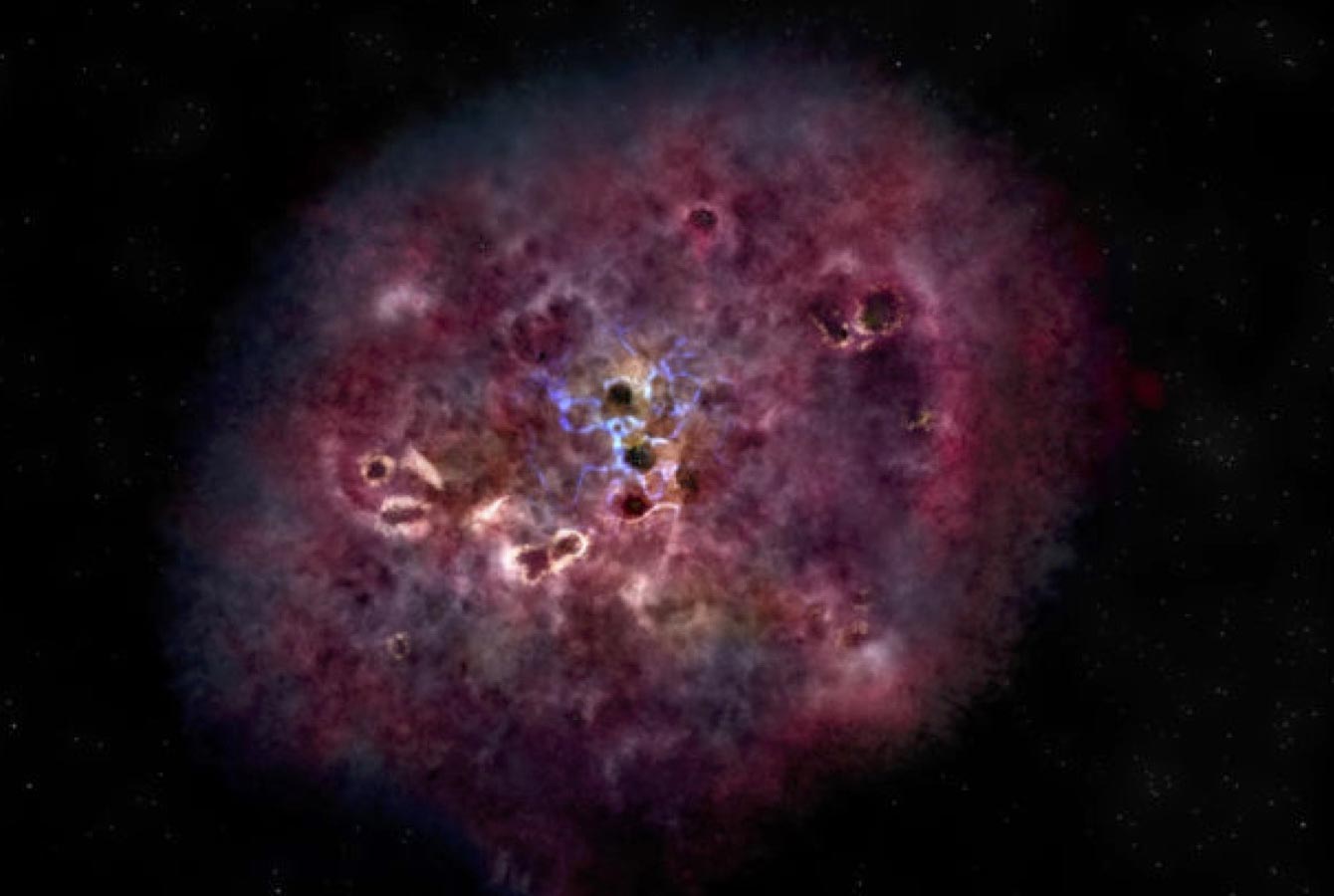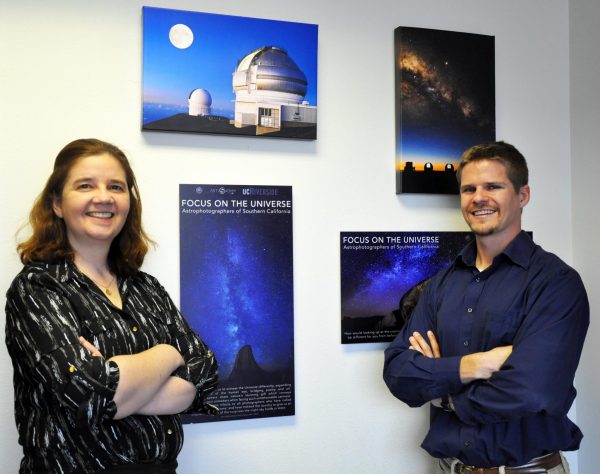
An international team of astronomers led by scientists at the University of California, Riverside, said on February 5, 2020, that they’ve spotted a large galaxy in the early universe that must have undergone a furious blaze of star formation, then inexplicably become inactive after just 800 million years. The galaxy is labeled XMM-2599. They used the W. M. Keck Observatory on Mauna Kea in Hawaii to study it. They say they’re seeing the galaxy as it was when our universe was only 1.8 billion years old, or just 13% of its current age. They wonder how it formed so many stars so quickly – some 300 billion stars when they looked at it – and also why it then stopped forming stars. Plus they wonder what this galaxy might look like if they could see it in the present day.
Their new study was published on February 5 in the peer-reviewed journal Astrophysical Journal Letters.
Astronomer Benjamin Forrest of UC Riverside is the study’s lead author. He said in a statement:
Even before the universe was 2 billion years old, XMM-2599 had already formed a mass of more than 300 billion suns, making it an ultramassive galaxy [for that period of the universe’s history]. More remarkably, we show that XMM-2599 formed most of its stars in a huge frenzy when the universe was less than 1 billion years old, and then became inactive by the time the universe was only 1.8 billion years old.

Astronomer Gillian Wilson of UC Riverside commented:
In this epoch, very few galaxies have stopped forming stars, and none are as massive as XMM-2599. The mere existence of ultramassive galaxies like XMM-2599 proves quite a challenge to numerical models. Even though such massive galaxies are incredibly rare at this epoch, the models do predict them. The predicted galaxies, however, are expected to be actively forming stars.
What makes XMM-2599 so interesting, unusual, and surprising is that it is no longer forming stars, perhaps because it stopped getting fuel or its black hole began to turn on.
Our results call for changes in how models turn off star formation in early galaxies.

The team used spectroscopic observations to make detailed measurements of XMM-2599. They determined that the galaxy must have formed stars at a rate of more than 1,000 solar masses per year at its peak of activity, and they called that rate:
… an extremely high rate of star formation. In contrast, the Milky Way forms about one new star a year.
Because we’re seeing this galaxy from very far away, we’re seeing it as it was very long ago. The astronomers said it’s interesting to speculate on what will happen to XMM-2599 as it evolves throughout time. Wilson commented:
We have caught XMM-2599 in its inactive phase. We do not know what it will turn into by the present day. We know it cannot lose mass. An interesting question is what happens around it. As time goes by, could it gravitationally attract nearby star-forming galaxies and become a bright city of galaxies?
In other words, will this relatively massive galaxy in the early universe become the heart of a galaxy cluster? Co-author Michael Cooper of UC Irvine said this outcome is a strong possibility. He commented:
Perhaps during the following 11.7 billion years of cosmic history, XMM-2599 will become the central member of one of the brightest and most massive clusters of galaxies in the local universe. Alternatively, it could continue to exist in isolation. Or we could have a scenario that lies between these two outcomes.
Clearly, there are many questions. The team plans to continue its observations of XMM-2599 at the Keck Observatory.

Bottom line: Astronomers made a detailed study of the galaxy XMM-2599 and determined it had a mass of more than 300 billion suns. Yet this galaxy exists when most other galaxies have fewer stars, when the universe was only 13% of its current age. Why – after a brief period of extreme star formation – did this galaxy mysteriously fizzle out? And what would it look like now, if we could see it in the present day?











